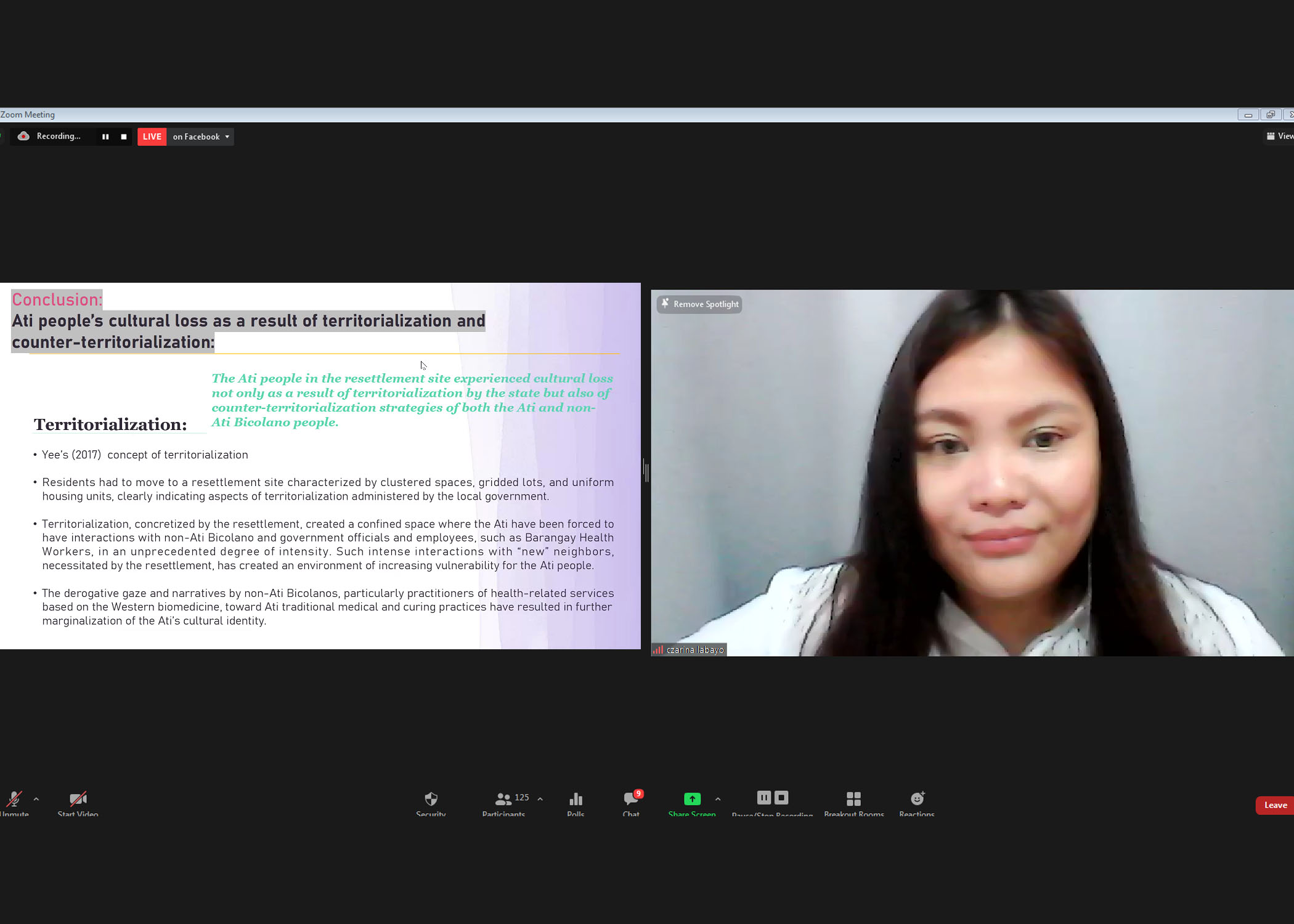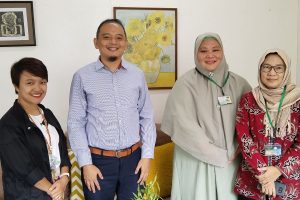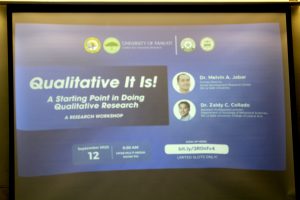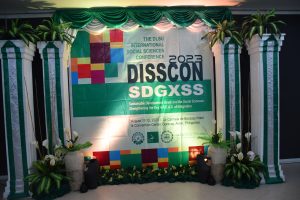A Time of Living Dangerously: Resettlement and the Threat to Indigenous Peoples’ Identity
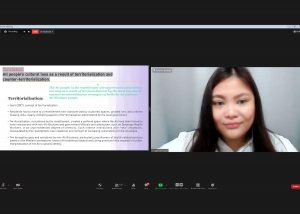 In a week when Filipinos and the world feared that the people of Ukraine would lose the nation they had long fought to build, the story of a similar plight – much closer to home – was told in a webinar that focused on the loss of home and, possibly, much valued customs.
In a week when Filipinos and the world feared that the people of Ukraine would lose the nation they had long fought to build, the story of a similar plight – much closer to home – was told in a webinar that focused on the loss of home and, possibly, much valued customs.
A presentation entitled “Disaster, Resettlement, Vulnerability: A Case Study of Indigenous People in the Bicol Region of the Philippines” was hosted by the Social Development Research Center on March 4 over Zoom. During the webinar, Dr. Czarina Labayo of the DLSU Department of Sociology and Behavioral Science described the plight of the indigenous Ati people in their resettlement in a safe zone just outside the Mayon Volcano National Park. Based on her doctoral dissertation, her talk was the first in SDRC’s webinar series for 2022, and it focused on the relationship between post-disaster resettlement and the vulnerability caused by culture loss among IPs. As a participant observer in the study, Dr. Labayo witnessed how the Ati continue to live in danger despite their transfer from the foot of Mayon to housing in the San Andres Resettlement Site in Sto. Domingo, Albay, because their traditional health system is being replaced by Western bio-medical practices.
Using the concepts of territorialization and counterterritorialization first introduced by Dakila Kim Yee of the University of the Philippines-Visayas in Tacloban with regard to post-Haiyan reconstruction policies, Dr. Labayo illustrated how the Philippine government controlled the Ati after they had been moved to the resettlement site. Among the physical conditions they were subjected to were being confined to the uniform houses they were placed in, and being prevented from returning to their previous homes at the foot of Mayon and leaving their resettlement houses without prior notice. In addition, there were unwritten rules set by the Department of Social Welfare and Development that they were expected to follow. Rules such as being prohibited from drinking alcohol and from engaging in gossip were indicative of the belittling view that government has of IPs, with the Ati sharing that they were often spoken to in a derogatory manner.
Dr. Labayo further relayed how the Ati requested to be allowed to use the back-up houses owned by Bicol natives that served as shelter for the owners during times of disaster, because the houses were empty most of the time and were viewed as a waste of residential space, but their request was denied. Moreover, because the livelihood opportunities in soap-making that were promised by the LGU never arrived, the Ati had to resort to seeking new customers – known as pagdayo – who would purchase their herbal medicine products, since the old customers they had in the area where they previously lived were no longer accessible. In the process, their children were forced to stop schooling as they needed to be taken along while searching for customers, and the families resorted to living under a bridge while away from the resettlement area.
Most significantly, the Ati’s traditional health system was disregarded by the LGU’s health workers, who found their methods of diagnosis and use of “kahoy-kahoy” or herbal medicines primitive and ineffective. Pregnant women were forced to give birth in the barangay health facility, a process that threatened their sense of safety and security as they believe expectant mothers are sought out by aswang or witches. In cases illustrating their predicament, Dr. Labayo shared stories of unfortunate outcomes of treatment of illness by doctors, leading community members to refrain from visiting health centers when they may need to.
Concluding her presentation, Dr. Labayo underscored the importance of the Ati’s traditional health practices as the core of their identity. Rather than seeing such practices as being “unfit and unhygienic,” she suggested that closer attention should be paid to the process of inclusion and exclusion in such disaster settings, and greater concern fostered for the most susceptible of the population, particularly when Philippine society is sadly marked by such high degrees of division and difference.
The open forum that followed the presentation included questions raised on what is involved in the process of entering into IP communities for study; how to deal with the National Commission on Indigenous People (NCIP) when conducting such research; how the government can strike a balance between cultural relativism and implementing western medical practices; what coping mechanisms the Ati have adopted in seeking livelihood prospects; and what future topics could be studied in relation to this study on the Ati people.
An estimated 125 registrants viewed the webinar, including those from the University of the Philippines-Diliman, Foundation University-Dumaguete, the Philippine Army General Hospital, and Mentari Intercultural School-Jakarta.
The “Disaster, Resettlement, Vulnerability” webinar was the first in a series of activities to be held this year in commemoration of the Center’s 43rd anniversary.


